I recently posted a story about how the increased popularity of brewery taprooms is siphoning business away from more traditional drinking establishments, like the corner bar. You can read the previous story here. Opinions abound, but there’s no denying the data that shows an ever-increasing amount of bar traffic is moving through brewery taprooms and less is moving through traditional bars.
Turns out, that shift is part of a bigger trend. An article recently published in Beer Connoisseur magazine talks about this issue as part of an evolutionary shift in the beer industry. The story, On-Premises Retail vs. Brewery On-Premises, notes the rise in popularity of brewery taprooms but also talks about other changes in the industry.
When I posted my story, some readers commented about the impact, or lack thereof, that brewery taprooms are having on “good beer bars.” Like my story, the story in Beer Connoisseur didn’t really delve into that particular subject too deeply. However, it does add some interesting information to the conversation.
It’s Not Just Taproom Versus Corner Bar
Throughout the story, Beer Connoisseur cited Lester Jones, chief economist for the National Beer Wholesalers Association, and referenced data supplied by that organization. According to Jones, the big beer story in 2018 might be the changing nature of on-premises retailers. “The reality is we’ve seen a change in the on-premises retail marketplace. Classic bars and taverns are in decline, but the options for on-premises are growing.”
“The traditional model we know and love – the neighborhood bar – is slowing down and declining,” Jones said. “Year-over-year, there are fewer beers sold in those channels, because on-premises sales around them are changing.”
Changing? What does he mean by changing? Jones pointed to the rise of brewpubs and brewery taprooms, but he also pointed to the emergence of something he called the “experiential taproom.” The examples he provided included the Philadelphia, San Diego and Baltimore zoos, all of which now offer a brew and zoo experience.
We’ve all seen it; other new types of on-premises beer retailers have emerged. It’s not uncommon to find beer at movie theaters these days. The lil ol’ Admiral Theater in West Seattle has two beers on tap, a locally brewed IPA and a locally brewed Pale Ale, and more beers in bottles. Grocery stores like Whole Foods and QFC have honed in on the on-premises retail business, too. Whole Foods in Seattle’s South Lake Union neighborhood and QFC in downtown Bellevue, for example, both offer beer on tap so you can enjoy a pint before or after you do your shopping. There are more examples out there.
Jones and other experts also point out that special occasion sales are on the rise. That is, one-off events, such as beer gardens, fundraisers, unusual festivals, and the like.
According to Jones, “Retail is so dynamic, it’s small and local, it’s about finding a niche. If there’s a pocket of activity it can work. So, at the same time that we’re seeing bars and taverns close, these other experiential ones are opening. Is it a net gain? Is it good? It’s just what it is. The alcohol industry is just evolving.”
Don’t Deny the Science
Somewhere between White Center and West Seattle there’s a three-toed footprint in the tracks of beer evolution. Those of us who’ve paid attention to the Seattle beer scene for more than a few years will remember the bizarre emergence of Super Deli Mart in 2009. It was hard to wrap your brain around at first. You’d tell people about it and they’d stare at you blankly. It was a convenience store with great beer on tap. Really. Great. Beer. In one stop you could get a bag of Doritos, a box of tampons, a pack of Marlboros, and a pint of Pliny the Elder. How about a 12-oz tulip of Firestone Walker’s Parabola to go with that tube of ChapStick?
At first we thought it was an anomaly, but it didn’t take long for Super Deli Mart to assert itself in the local gene pool. It’s the wildcard allele in the beer scene’s DNA, an allele that creates new types of drinking establishments, presenting itself in any number of unexpected and yet-to-be-seen species.
Ten years ago The Beer Junction, Chuck’s Hop Shop, Teku Tavern and other similar businesses did not exist. It’s a new model that is different than the traditional neighborhood bar, corner bar, dive bar or sports bar. Different, even, than the traditional pub. Today it’s hard to imagine that they never existed. Like trying to imagine the Seattle skyline without the Space Needle.
Those kinds of establishments, which lend their entire, singular focus to beer (okay, cider and mead too), are the prodigy of the new era of beer. They were begotten by the craft beer revolution. They are a new feature on the on-premises landscape. Even beer-focused bars like Beveridge Place Pub, Cooper’s Alehouse, and Latona Pub are, well, pubs. There is something inexplicably different about this new style of beer joint. I can’t put my finger on it, but Beer Star is not a pub. It’s one of these newfangled beer joints.
As far as the impact that all of this is having on good beer bars like The Pine Box, Brouwer’s Cafe, and Collins Pub, that remains to be seen. Experts quoted in the Beer Connoisseur article suggest that things are changing for those types of on-premises retailers as well. Nothing that I’ve seen, or that they referenced, suggested that brewery taprooms, or any of the other newly hatched species of on-premises drinking establishment, threatens our beloved beer bars. The continued rise in popularity of good beer (the beer we used to call craft beer) is surely helping those kinds of businesses. Still, it is likely that they’ll need to adapt in some way, though I’ve heard different opinions about how.
Evolution or extinction. Beyond that, what the future holds for beer drinkers is a story yet-told. One thing is for sure, the times they are a changin’.

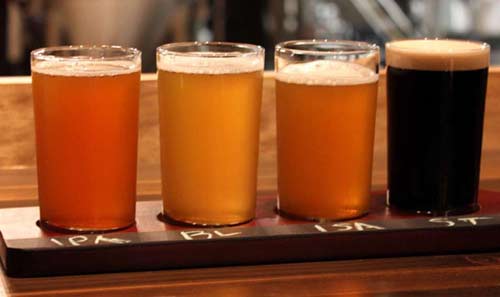
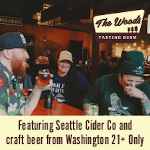
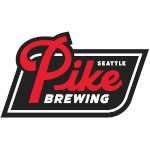
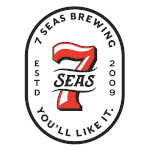

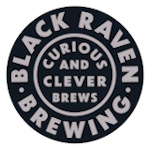
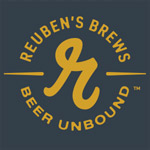

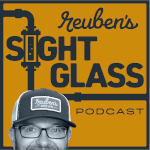

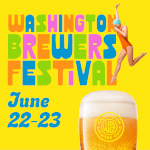


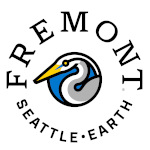

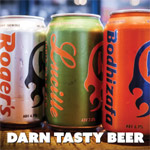
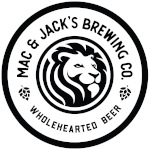
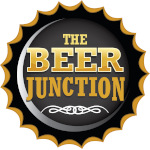
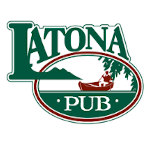
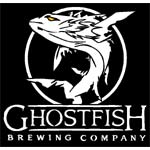
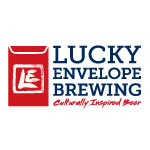







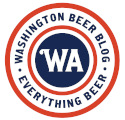
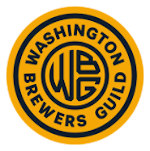


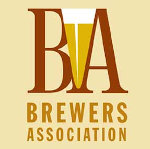
Head to Beer Star on Friday evening, Ounces on a Saturday afternoon, Lowercase on Sunday for brunch, and what do you find? Families. This is a main reason our family is loving this new trend. You can take the kid and the dog along to a place where you can sip on a brew and find food options, and many taprooms have areas for kids and toys for them. These are fun places to meet like-minded parents in Seattle which can normally be a place where it’s challenging to do so.
Boomers, Xers, and Millennials. I think many of us love beer, but we’re also health conscious (carbs!)[gluten free ???]. I’m a boomer (incr. waist line). I like smaller sample sizes and schooners (SuperDeliMart !). I’m looking forward to distilled beer ! (zero carbs). Do we know what this is ? ….. Whiskey ! 🙂 (no hops in the mash). It’s been fun to watch the evolution of Craft (good) Beer. For me, it’s been a journey from good European beer (early 80’s, Utah liquor stores) to WA/OR tap beer in the PNW. When they put my favorite in a bottle, that was cheaper heaven ! (Deschutes, Bachelor Bitter)(similar to D, Mirror Pond Pale). Evolution from mixed 6-packs (grocery stores hate me, but they were all on sale from same brewery :-p) to bottle shops. I like flavor and variety. Could never understand drinking just one type of beer all evening long. :-p I don’t like super spicey foods, spice that overwhelms the food, but BIG IPAs are popular and keep breweries in business to offer me goldens, pislners, pales and single IPAs, even porters and stouts ! (mmmmm, Deschutes !) So, now I like the pub/bottle shops. The pub crowd likes to drink $$ beers on-premise which subsidizes my take-away $ bottle/can(!) beer 🙂 [oh, and don’t give me the “tap tastes better than bottle/can” as you listen to your compressed MP3’s vs. Audio CD’s :-)] Convenience trumps quality. Steaming vs. DVD’s — The Times, they are a changing ! (Evolution)
Personally, I would much rather visit a brewery than a taphouse or beer bar. However, it often seems that breweries have shorter hours. I only drink beer (unless I have to drink margaritas at a Mexican restaurant.) I can’t remember the last time I visited a bar. I may also be in the minority when it comes to kids and dogs. I don’t mind if they’re well behaved, but otherwise they can both get in the way of a good time. My only other recommendation is to improve the food menu and try something other than pub food.
I’d agree with Jodi – I think brewery tasting rooms often feel safe and wholesome in a way that not all bars do. That’s good for families, first dates, workplace happy hours, etc.
I also think drinkers like having a connection with where the beer is made. It’s much like the trend where restaurants tell you which local farm grew your salad.
And finally, brewery tasting rooms have changed a lot. I don’t hear much talk about it, but 10 years ago they were often mismatched tables in a corner of the warehouse with few amenities. And some still are, but many breweries have shelled out a lot of money to create inviting spaces – often a lot nicer than the declining bars cited in these reports. That’s just competition with customers being the big winners.
It is true- you see beer show up in places where you wouldn’t have seen it in the past. I remember when I visited a Whole Foods for the first time many years ago and my jaw- dropping reaction when I noticed that they have a craft beer bar inside the store and I could drink while I shopped. Today, I no longer react to such things because they are becoming so commonplace and it is certainly taking a toll on traditional bars/taverns.